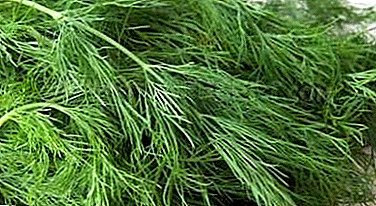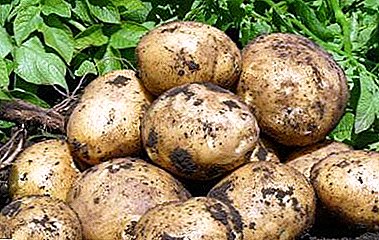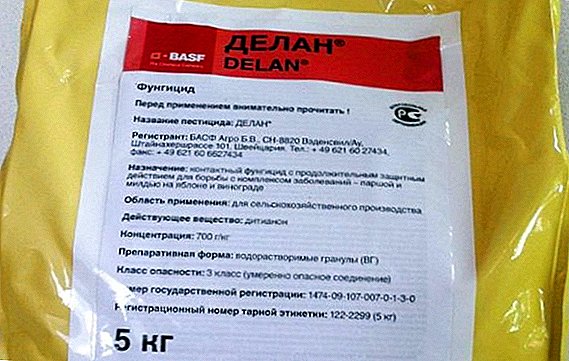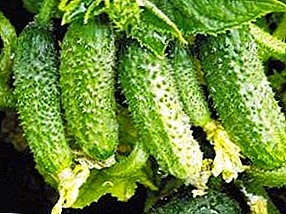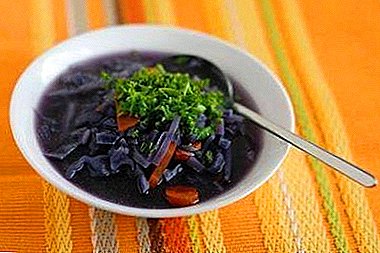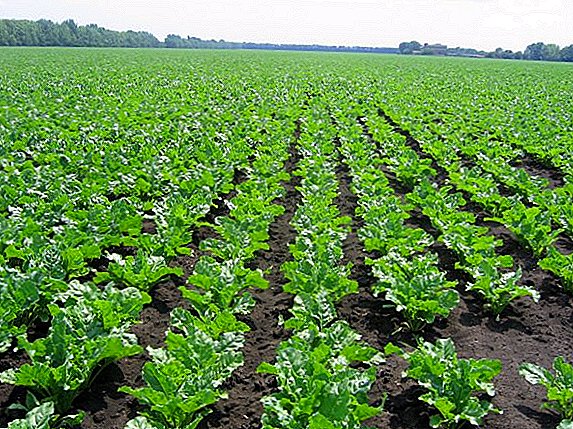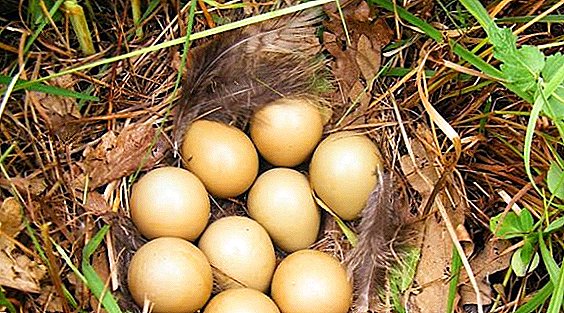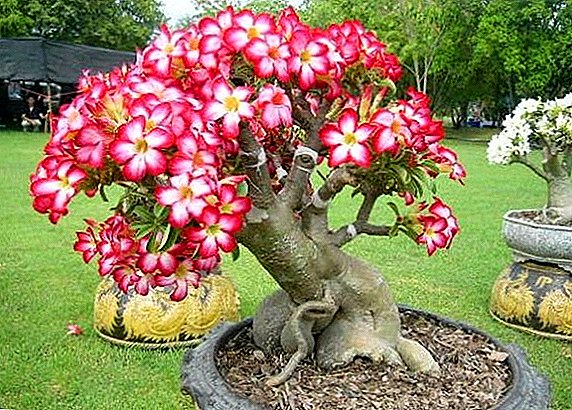 Strawberry is perhaps one of the most popular and beloved berries. Probably, there is not a single garden, vegetable garden or summer cottage, wherever it grows. Her first and long-awaited berries seem a miracle - they are so beautiful, juicy and tasty. Every year there are new varieties, and it is quite difficult to navigate in this diversity.
Strawberry is perhaps one of the most popular and beloved berries. Probably, there is not a single garden, vegetable garden or summer cottage, wherever it grows. Her first and long-awaited berries seem a miracle - they are so beautiful, juicy and tasty. Every year there are new varieties, and it is quite difficult to navigate in this diversity.
Variety description
Strawberries varieties "Vicoda" developed by Dutch breeders. The great popularity of the variety due to the remarkable taste, tender pulp, natural beauty and color of the fruit. The bush is strong and strong, of medium height, has quite powerful shoots. The leaf is large, carved, rather light. A nice feature is a small number of whiskers.  The berries are large, close in shape to a spherical, bright red color. The usual weight of the berries - 50-70 g, the mass of "firstborn" comes to 120 g. Berry is dense, without cavities. Sweet enough, although it has a sour, but very pleasant aftertaste, and light cherry notes aftertaste. Late variety - harvest begins in the third decade of July.
The berries are large, close in shape to a spherical, bright red color. The usual weight of the berries - 50-70 g, the mass of "firstborn" comes to 120 g. Berry is dense, without cavities. Sweet enough, although it has a sour, but very pleasant aftertaste, and light cherry notes aftertaste. Late variety - harvest begins in the third decade of July.
Did you know? Strawberry - aphrodisiac of natural origin. In the seeds of the berries is quite a lot of zinc, which increases sexual attraction in both partners and increases by a quarter the probability of conception. This property of the berry has long been known to the French. It is thanks to him that the newlyweds for dinner before the wedding night are served a strawberry dessert soup, seasoned with cream.
Features grade
This variety has some features that are worth paying attention to:
- the first berries are quite large in size, often doubled or flattened from the sides, they subsequently acquire the correct, proper shape;
- the fetus is easily separated from the sepal, and this in no way affects the subsequent transport and storage;
- the whitened tip of the berry is a signal of its maturity;
- "Vicoda" tolerates the winter and our frosts.
 Advantages of the variety:
Advantages of the variety:- high yield - up to 1 kg from a bush;
- large berry with exquisite taste;
- excellent transportability, without loss of presentation;
- tolerates winter and frost;
- adaptability to different types of climate;
- resistance to diseases and pests;
- berries are suitable for any use, raw, frozen, canned.
- the heat is bad for the consistency of the fetus;
- Bushes require space (the distance between neighbors should be large), this circumstance is not very convenient for small cottages.
Important! There are more sucrose in lemon than strawberry, and strawberry more vitamin C (ascorbic acid) than lemon. That's right: lemon is sweeter than strawberries. This berry contains almost no sugar. Eating only strawberries, you can lose a few pounds in 3 days.
Proper soil preparation
Strawberries "Vicoda", as already mentioned, is high-yielding and adaptive to climate, but still, before you start growing it, you should pay attention to some agrotechnical features. For this variety, black soil, loam and gray forest land will be the best soil. The depth of groundwater is not less than 70-90 cm. The recommended acidity of the soil is pH 2.7-6.2. Feels good after onions, garlic, marigolds. The same place can be used under strawberries for 3-4 years.  This variety just loves sunlight, keep this in mind when making a choice of place for the beds. Before planting, weeds must be removed from the future bed. Then you should fertilize the ground with organic matter and dig up. Prepare the soil for spring planting should be in the fall. In the event that you plan to plant seedlings in summer or autumn, you need to prepare the ground for 25-35 days before planting. It is necessary to make it so that the soil has time to settle, otherwise the roots will become bare, which will negatively affect the growth of the seedling.
This variety just loves sunlight, keep this in mind when making a choice of place for the beds. Before planting, weeds must be removed from the future bed. Then you should fertilize the ground with organic matter and dig up. Prepare the soil for spring planting should be in the fall. In the event that you plan to plant seedlings in summer or autumn, you need to prepare the ground for 25-35 days before planting. It is necessary to make it so that the soil has time to settle, otherwise the roots will become bare, which will negatively affect the growth of the seedling.
Features of growing
First you need to choose quality seedlings. Seedlings varieties "Vicoda" should be powerful, healthy and strong. Attention should be paid to such details:
- root neck diameter must be at least 7 mm;
- roots - fibrous, with processes more than 7 cm;
- whole, free of defects, upper kidney and 3-6 normal undeformed leaves.
Did you know? The largest strawberry, which weighed 230 g, was picked in 1983 in the United States.A few days before landing in the ground seedlings should be hardened. To do this, for 1.5-2 days, place it in a cool place. To protect the sapling from pests and stimulate the growth of the side roots, cut the roots into 4 cm.
 Planted seedlings in March or at the end of summer - beginning of autumn. If you decide to plant strawberries in the spring, this should be done after the snow has melted, when the soil is warm enough.
Planted seedlings in March or at the end of summer - beginning of autumn. If you decide to plant strawberries in the spring, this should be done after the snow has melted, when the soil is warm enough.Plant on your site such delicious strawberry varieties as: "Queen Elizabeth", "Elsanta", "Marshal", "Asia", "Albion", "Malvina", "Masha", "Queen", "Russian Size", " Festival, Kimberly and Lord.
Here are some more tips on planting strawberries:
- You should not hesitate with the summer-autumn planting of seedlings, otherwise, not caught on, they can die from frost.
- Try to choose a day for the procedure, when the sun in the sky will be covered with clouds, or at least on a fairly cloudy day. If planted in bright sunlight, the next half a month the seedlings will have to be shaded.
- In the future garden beds make the following pattern: aisle - 0.5-0.6 m, the distance between the holes - 0.4 m.
- Pour water into the bottom of the hole and plant a seedling there. This should be done in such a way that the root system of the plant is located freely. Carefully and tightly sprinkle with earth and make sure that the root neck, which is the growth point, is flush with the ground.
- Seal the soil and lightly pour it.
- Mulch the ground with humus, this measure will not allow the formation of a crust on the soil.
If you have a small plot, you can build a pyramid bed or vertical bed for growing strawberries.
Strawberry care
If the planting stage is very important, then the care of the planted and established plant is the most important. Quite often, due to improper care, or due to its absence, a successfully adopted plant promises to give a bountiful harvest. To prevent this from happening, follow our recommendations. 
Spring care
As already mentioned - "Vicoda" loves water. Remember this rule! In the spring, depending on the abundance of natural rainfall, watering should be carried out 1-2 times a week. During the entire period of growth and fruiting, it is necessary to mulch the plant. This procedure will not allow the soil to dry out. In the spring you should feed the plant.
Plant strawberries in autumn and spring.This should be done according to the following scheme:
- March - nitrogenous fertilizers (in small quantities). Chicken droppings are rich in nitrogen, they should not be abused, so make a weak solution (1 cup of litter per 1 bucket of water). To sustain 3 days, after which water each bush 0.5 liters of infusion;
- April - mineral. A glass of wood ash should be diluted in 1 liter of hot water. The resulting mixture should stand for 1-2 days, after which it is added to 9 liters of water and the beds (1 l per 1 sq. M) are watered with the resulting solution (10 l). Ammophoska needs to be mixed with ammonium nitrate (2: 1) in a liquid solution and process the beds (at the rate of 15 g per 1 sq. M);
- May is organic. Manure - 2 cups per bucket (10 l) of water with the addition of a spoon of sodium sulfate. Well stir and water each bush (1 l) or sprinkle with manure around the bush, covered on top with a layer of earth 3 cm thick.
Important! Mineral fertilizers should not be applied later than 15 days before the berries ripen.
Summer care
During the flowering and harvest, strawberries should be watered 2-4 times a week. During the formation of the fruit do not forget to pour sand. And:
- weed the beds, not giving the opportunity to grow weeds;
- before the next flowering the plant should be fertilized with a water-sulphate solution;
- After harvesting, fertilizer should be applied with a solution of wood ash, as indicated above.

Autumn care
In the autumn, it will be enough to have two irrigations, until the first frost approaches. Watering should be combined with the application of mineral fertilizers. In addition, follow these guidelines:
- it is not worth making fresh manure in the fall, with it parasites can get into the soil;
- remove old foliage and mustache;
- carefully inspect each shrub: whether roots appeared from the soil. If so, sprinkle them, otherwise they may freeze in the cold;
- Mulching is an important element that will help to transfer the winter frosts. Winter mulching is carried out using pine needles, straw, leaves.
Check out the best varieties of large strawberries.
Harvesting and storage
As you know, strawberries are very tender berries; it is much more difficult to preserve them than to grow them. Therefore, harvesting should begin a couple of days before full maturity. In this case, it will be possible to save it for a slightly longer time. For storage better suited berries smaller, more dry. Large, with juicy pulp, spoil faster.  Tips for collecting and storing berries are as follows:
Tips for collecting and storing berries are as follows:
- the strawberries that you decided to keep for storage, better to pluck with a stem (4-6 cm);
- you need to pick strawberries in the morning, after the dew has come down, or in the evening, shortly before sunset;
- it is best to store the berry in boxes covered with newspaper, ideally in one layer;
- before you put the strawberries in storage, sorting it is not worth it, do this procedure after delivery;
Did you know? Due to the complete set of vitamins of group B, strawberry is a real natural antidepressant. If you suffer from stress, daily consumption of 200 g of the berries normalizes your mental state and stabilizes the emotional background.
- after harvesting and delivery to the storage site, as soon as possible, the crop should be cooled to 0 ... +2 ° С. The sooner you do this, the longer (maybe even 3-4 days) the berry will remain fresh in the fridge;
- strawberries can not be washed, it should be stored in glass jars. It is necessary to transfer the containers very carefully, carefully inspecting each berry so that the spoiled fruit does not fall into the jar, otherwise neighboring berries may suffer. Keep in mind that the maximum period of such storage is three to four days, if you did everything correctly.
 There is another storage method - freezing. To do this, wash the crop, let it dry, laying in a single layer on towels. If you are afraid to spoil the towels with the juice of berries - use paper. When the berries dry up, lay them on trays or immediately to the bottom of the freezer trays, pre-bedded plastic bags.
There is another storage method - freezing. To do this, wash the crop, let it dry, laying in a single layer on towels. If you are afraid to spoil the towels with the juice of berries - use paper. When the berries dry up, lay them on trays or immediately to the bottom of the freezer trays, pre-bedded plastic bags.Important! Remember: the slightest violation of the integrity of the berries almost immediately leads to its damage. Therefore, the collected strawberries intended for storage should not be touched at all.When the whole strawberry hardens, collect it in one packet and leave in the freezer tray. Thawed berry limp pretty quickly, but until then it is quite strong and very tasty, almost as fresh.
Strawberries can also be grown at home, in a greenhouse, and without soil.Vicoda is an excellent variety of one of the most delicious, beloved and popular berries. If you are a gardener and are still planning to try planting this berry on your plot, do not hesitate for a second: this variety will not disappoint you. And if you just want to try this ripe juicy beauty, you will not be difficult to find a "Vicodu" on the market in season.
Reviews from the network




